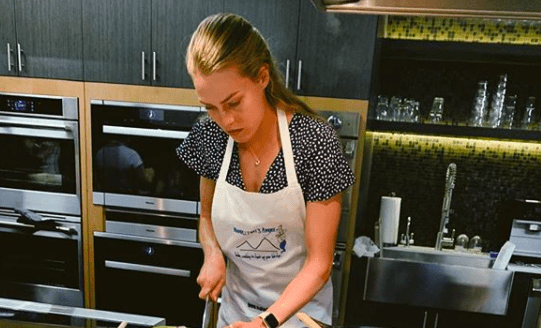What Colleen Quigley eats in a day
Nutrition tips from one of the best steeplechasers in the business
 Photo by:
Colleen Quigley
Photo by:
Colleen Quigley
Colleen Quigley is a 2016 Olympian in the 3,000m steeplechase, a member of the Bowerman Track Club and a foodie. The runner has been stationed in Park City, Utah for the past five weeks, where she’s just about completed her one and only altitude training camp for the summer. Despite her empty 2020 race calendar (with the exception of an inter-squad race she’ll be running soon), Quigley has been putting in good training and building towards 2021. A big part of good training is eating well.
https://www.instagram.com/p/CBqvDwunx1-/
Quigley has a passion for food. The runner attended Florida State University and majored in dietetics. “While I majored in it, I can’t call myself a dietician because I haven’t done the internship. However, nutrition is a passion of mine. I have applied everything I learned into what I do now as a professional runner. I can really see first hand how important it is to fuel yourself as an athlete. I can tell the difference when I do, versus when I don’t.”
RELATED: Malindi Elmore’s daily routine
While Quigley can’t give professional nutrition advice, she explains that she’s often messaged on social media or through her website by young women looking for nutrition tips. “Lots of young runners ask me for nutrition advice and message me admitting that they have eating disorders, fuelling problems and body image issues. It’s extremely common.” But Quigley wants people to remember that low weight isn’t sustainable, especially as a runner. It’s always longterm harmful over helpful.
Here’s what a typical day of eating and training looks like for Quigley, from when she wakes up to when she hits the hay.
https://www.instagram.com/p/CBdaxszHab5/
7 a.m. – Breakfast is one or two cups of coffee and savoury oatmeal, which includes steel-cut oats with cooked sweet potato, beets, spinach, a fried egg, toasted nuts or roasted chickpeas and grated parmesan cheese.
9 a.m. – The team workout takes place in the morning and it’s the tougher of the two training sessions. On Wednesday the team’s track session was a three-mile warm up, 12 x 400m and a three-mile cooldown.
12:30 p.m. – Lunch will be some combination of leftovers and veggies. Yesterday’s was stir fry with quinoa, onions, carrots, broccoli, peppers, eggs and soy sauce. Quigley will also have a collagen drink right after the workout. After lunch, she’ll have a nap.
https://www.instagram.com/p/B_S_sOiH5NR/
4 p.m. – A 30-minute easy jog followed by an afternoon snack. A snack will be something like yogurt with granola (homemade) and berries.
7 p.m. – A typical dinner would include salmon, broccoli, rice, peanut sauce and a green salad. After dinner, Quigley will have some dark chocolate and an evening tea before bed.
When it comes to alcohol and desserts, Quigley says she picks her spots. “Altitude camp means very minimal alcohol and no desserts. I’ll have the occasional glass of red wine. I want to be as prepared as possible for training while I’m at altitude. But things are way more relaxed in the fall and summer post-season. I can’t be hyper-focused all year round. I’ll spend five weeks being super diligent, and then after a few races, I’ll celebrate. It ebbs and flows.”
Her biggest piece of nutrition advice: avoid extremes. “You shouldn’t say, ‘I never eat this’ or ‘I always eat that’. While I do go through regimented periods, I don’t like calling foods bad or swearing off something entirely.”
RELATED: Virtual Canadian 10K Championships set for Canada Day


